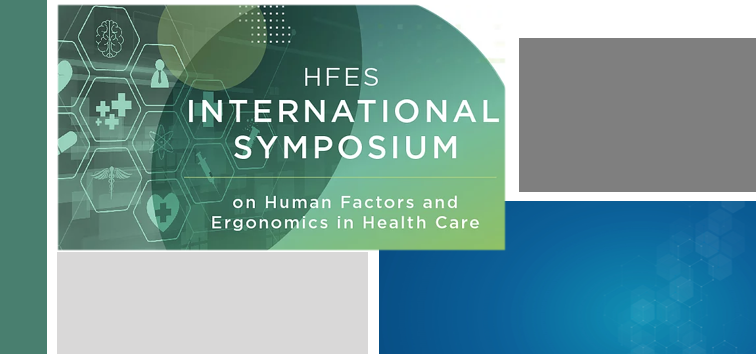Takeaways from the 2021 International Symposium on Human Factors and Ergonomics
Takeaways from the 2021 International Symposium on Human Factors and Ergonomics
The Annual HFES International Symposium on Human Factors and Ergonomics in Health Care was held again virtually in 2021, and the attendees were able to experience panel discussions, keynote talks, town halls, and poster presentations with relative ease (minus a few technical gliches). The Agilis team attended all four days of the symposium and participated in poster and panel presentations:
Medical Device Cybersecurity: Products Must be Both Accessible for Users and Impenetrable for Cyber Criminals.
Speakers - Lauren Jensen, PhD: Human Factors Engineering Consultant at Agilis Consulting Group; Michelle Jump: Global Regulatory Advisor - Medical Device Cybersecurity at MedSec; Shannon Hoste: Sr. Director Human Factors & Regulatory Strategy at Agilis Consulting Group
The poster presentation focused on 1) Cybersecurity basics, 2) Measures to improve cybersecurity, 3) Methods to assess user comprehension of product cybersecurity features, 4) Guidance on design elements and the user interface, and 5) FDA perspective on the balance between HF and cybersecurity.
Leveraging and Communicating the value of Pre-Validation Human Factors Work in Your Human Factors Strategy
Speakers – Molly Story: Global MED Advisor at Sanofi; Shannon Hoste: Sr. Director Human Factors & Regulatory Strategy at Agilis Consulting Group; Mary Beth Privitera: Principal of Human Factors and Research at HS Design; Xin Feng: Human Factors Strategy at BD
This panel discussion was focused on the myriad of Human Factors research techniques that enhance pre-validation work and what factors of design these methods can inform. This talk highlighted the value of data collected from different methods up to and including simulated use studies and the evaluation of observational data and subjective data conjointly.
Stories and Lessons: What works (and doesn’t) in collaboration between your human factors team and key team stakeholders?
Speakers - Shannon Hoste: Sr. Director Human Factors & Regulatory Strategy at Agilis Consulting Group; Xin Feng: Human Factors Strategy at BD; Natalie Abts: Head of Human Factors Engineering at Genentech. Moderator - Jessie Huisinga, Manager Human Factors Engineering at Agilis Consulting Group.
This panel discussion presented the preliminary results from an industry focused survey which ask individuals at both pharma and med device companies to provide feedback on HF efforts within their organizations and their perceptions of HF by other stakeholders. This survey is still open, and the speakers would GREATLY appreciate your participation. The goal is to better align across stakeholder expectations and efforts related to HF within organizations by better understanding where there are similarities and differences in individual perceptions of HF. Please complete the short survey here.
The symposium featured 5 educational tracks:
Medical and Drug Delivery Devices
Hospital Environments
Patient Safety Research and Initiatives
Digital Health
Education and Simulation
The features presentations and poster session well represented each of these content areas. Not surprisingly, remote testing was a popular topic and was covered widely. Wholistically, the FDA has not changed their position on the need for protocol review ahead of conducting an HF validation remotely. CDER specifically indicated that they are “not aware of any data that supports the use of remote HF validation testing or of any consensus scientific guidelines or standards that can inform a remote HF testing approach.” Sponsors are encouraged to reach out to their program manager with questions related to HF validation testing.
The latest COVID-19 information from FDA can be accessed at https://www.fda.gov/emergency-preparedness-and-response/counterterrorism-and-emerging-threats/coronavirus-disease-2019-covid-19
FDA Presentation
Irene Chan, PharmD from CDER and both Kimberly Kontson, PhD and Hanniebey Wiyor, PhD from CDRH presented slides on the last day of the symposium.
Irene Chan’s presentation emphasized how to minimize information requests from the FDA for a submission. The five areas emphasized were:
Submit the necessary product samples.
Include your labels and labeling in the submission.
Provide complete user profiles as CDER really wants to get a full picture of your users.
Don’t assume your uFMEA is a use-related risk analysis (URRA).
Include a clear definition of successful performance or failure for each task.
In addition, it was highlighted that regardless of the current COVID-19 logistical requirements, it is not acceptable to test individuals in other countries for products that are intended for market in the United States. Also, if a sponsor is considering a surrogate population for their HF validation, they are encouraged to speak with their program manager and be prepared to discuss why the surrogate population is representative of the product’s intended end users and why the agency should allow for extrapolation of the surrogate population date to the intended user population.
Kim Kontson spoke to the currently popular topic of considerations for remote human factors testing for medical devices. Of particular consideration are:
The use environment that the study participant is in and ensuring it sufficiently represents actual use conditions.
Ensuring that the collection of observational data is sufficient and robust.
Training must be provided to users to replicate actual use and training decay is still a factor for remote testing.
Session logistics and data privacy and confidentiality must be discussed in a protocol submitted for FDA review.
During the Q&A session, some interesting points were also mentioned by the presenters:
Emphasis was placed on completeness of a protocol submission by looking at the guidance and reaching out to FDA before the submission, if necessary, to ask questions
Root cause analysis should be robust and must be completed for all use errors and difficulties/close calls. These items should all be addressed in the residual risk analysis, as well.
Hanniebey Wiyor focused on OTC testing requirements for devices and presented some statistics on the increase in OTC device reviews by CDRH in the last 3 years, where the number of premarket OTC HF consults reviewed from 2018 to 2021 increased for 510k, DeNovo, and Q-Subs. In addition, this presentation focused on the need for robust self-selection study design for OTC devices. Importantly, Dr. Wiyor presented an outline of CDRH’s current thoughts on human factors study design for OTC devices. Figure 1 outlines the two-phase testing approach
Figure 1: OTC Device Human Factors Methodology outline from Hanniebey Wiyor’s presentation titled “Human Factors Validation testing and data for over-the-counter medical device submissions.”
Phase 1 focuses on the self-selection of the OTC device. The participant pool should be large and unscreened. Then, participants should self-identify whether or not they can use the OTC device based on the device indications and contraindications. Figure 2 outlines the required components of the self-selection testing. Based on this, participants will end up in one of three categories:
Successfully self-selected – these participants correctly identify themselves as potential users of the OTC device.
Misidentified individuals – these participants incorrectly identify themselves as potential users of the OTC device. The incorrect identification needs further evaluation since these users have indicated that they would use the device even though they do not fit the indications or are contraindicated, thus could be exposing themselves to critical harms. Further interviews with these participants would be necessary to determine why they identified themselves as potential users when they should not use the device.
Failed to identify themselves – these participants incorrectly identified themselves as NOT being a potential user, when they are actual potential users.
Importantly, the size of the initial participant pool who take part in Phase 1 will vary depending on the outcome variables and the number of participants needed to perform testing in Phase 2.
Also, if there are no critical tasks associated with self-selection, where the indications and contraindications for the device do not have severe associated harms, then self-selection testing may not be necessary for the device.
Figure 2: Self-Selection Assessment content from Hanniebey Wiyor’s presentation titled “Human Factors Validation testing and data for over-the-counter medical device submissions.”
Only those users who successfully self-selected would move on to actual performance testing in Phase 2. The performance testing would be conducted according to the required performance testing of critical tasks for the OTC device. Figure 3 outlines the requirements for performance testing. A minimum of 15 participants will be need for Phase 2, but that does not mean Phase 1 should be stopped as soon as 15 people successfully self-select and move on to Phase 2 testing.
Figure 3: Performance testing content from Hanniebey Wiyor’s presentation titled “Human Factors Validation testing and data for over-the-counter medical device submissions.”
Conclusions
The information provided by FDA is extremely valuable to sponsors who are focused on moving their human factors programs forward at this time. Agilis has already integrated the new information on OTC device testing into active client projects. We welcome any questions about the FDA guidance. We also greatly look forward to seeing everyone in-person in New Orleans for the 2022 International Symposium on Human Factors and Ergonomics in Health Care!
About the Author:
Jessie Huisinga, PhD
Dr. Jessie Huisinga is a Senior Human Factors Consultant with Agilis Consulting Group, LLC and an expert in assessing human performance with extensive experience working with individuals with neurological impairments. She has a background in Biomedical Engineering and Biomechanics, with specialized training in Neurology in order to evaluate movement patterns and task performance in persons with performance limitations. She has experience assessing a diverse spectrum of home and professional use medical devices and products as well as conducting in-home and actual use usability studies.





